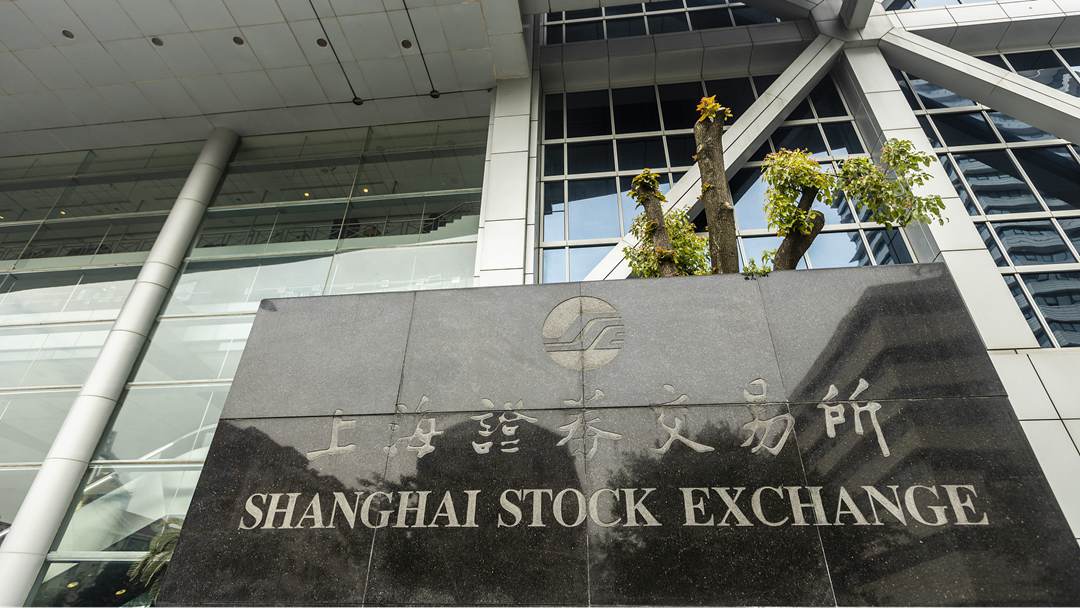
VCG
**Editor's note: **Matteo Giovannini is a finance professional at the Industrial and Commercial Bank of China in Beijing and a member of the China Task Force at the Italian Ministry of Economic Development. The article reflects the author's views, and not necessarily those of CGTN.
China's growing presence in fund managers' portfolios is rapidly becoming a major trend in today's global market as a result of the country's goal to open the financial industry to foreign capital and the increasing recognition that international benchmark indexes are granting to the world's second-largest economy.
Earlier this week the Index provider FTSE Russell publicly gave the green light for the gradual inclusion, over a period of three years starting from the end of October, of Chinese government bonds (CGBs) in its main bond index, the FTSE World Government Bond Index (WGBI).
The decision follows an announcement made in September 2020 by the same index provider, which is owned by the London Stock Exchange Group, of the intention to add Chinese sovereign bonds to its flagship WGIB index as a result of recent positive reforms rolled out by the Chinese government.
According to the estimates of the Hong Kong and Shanghai Banking Corporation (HSBC), the inclusion of Chinese debt in the WGIB index is going to increase China's weight in the index to over 5 percent, placing the country behind the U.S., Japan, France, Italy and Germany and at the same level as the UK.
The first aspect to underline in the announcement is that the move from FTSE Russell represents an important milestone in China's aspiration to embrace the rest of the world through a higher level of interconnectivity between domestic and global capital markets.
In particular, the inclusion in the WGIB index can be seen as a feather in China's cap not only because of the provider's prestige but also because it is the third benchmark index, after J.P. Morgan Chase and Bloomberg Barclays in 2019, to add yuan-denominated notes to their respective global indexes.
Significant improvements in crucial pain points of China's bond market such as a higher degree of market liquidity, foreign exchange and settlement flexibility, in order to meet global standards, are the main drivers for convincing the team of analysts of the British provider of market indexes to give their approval.
However, technical reasons are not in my view the only aspects that FTSE Russell could have taken into consideration for its analysis since there are other more empirical factors that can explain why in today's market context global benchmark indexes cannot afford to ignore China anymore.

The outside view of Shanghai Stock Exchange, in Shanghai, China. /VCG
The size of the Chinese market has certainly played a major role in determining its attractiveness considering that today the country's $16 trillion bond market is already the world's second largest and the inclusion of the country in a benchmark index offers global investors the strategic exposure to a growing domestic pension industry.
The steady growth of the Chinese economy over the last decades and in particular the rapid recovery from the COVID-19, which made it the only major economy to register a positive GDP in 2020, have led to widespread interest among foreign investors that see today's China as a country that offers high and stable yield. In this sense, Chinese government bonds, higher yield and lower volatility compared to U.S. Treasuries, have represented decisive factors for the increase to over $300 billion of foreign holdings of China's debt in the last two years, according to data from Wind Information.
The process of internationalization of China's debt market, which is leading to today's massive inflow of investments in domestic policy bank bonds, also has to be attributed to the Chinese government's well-crafted planning. The opening-up of the fixed income market in the Chinese mainland starting from the launch of the Bond Connect Scheme in 2017, which aims to provide an investment channel for foreign investors through trading infrastructure in Hong Kong, has represented the real stepping stone for the subsequent inclusion into the three major global benchmark indexes.
I believe that the discussions emerging from the fact that FTSE Russell has decided for a more conservative schedule for the inclusion of China in the index, over a period of 36 months instead of one year, do not necessarily represent a negative outcome for the country.
The recent declarations from the China Securities Regulatory Commission chairman for a balanced opening-up of the domestic financial market in order to prevent a large inflow of hot money and the announcement from the People's Bank of China of an increased level of scrutiny over the domestic credit rating industry are all signs of China's desire to prioritize a gradual approach through stability, containment of risk and prevention of turbulence in the domestic market.
All in all, the announcement of the inclusion of China's debt in another major global benchmark index shows that the current market dynamics are moving towards a convergence of interests between China's desire to gradually open up to the rest of the world and the global investment community's demand for diversifying its risk exposure.
This situation of mutual necessity and growing engagement thus offers an incredibly important learning curve that both China, through continuous improvement of market structure, and the rest of the world, through a better understanding of Chinese market dynamics, cannot afford to miss.
(If you want to contribute and have specific expertise, please contact us at [email protected].)
 简体中文
简体中文







